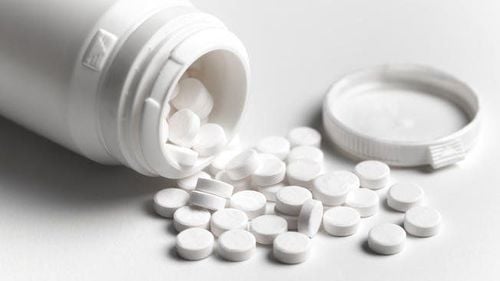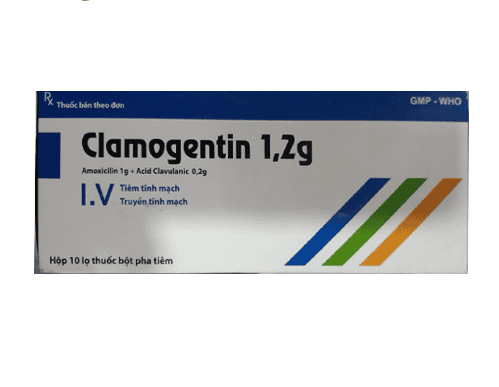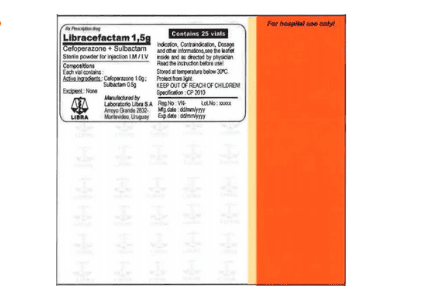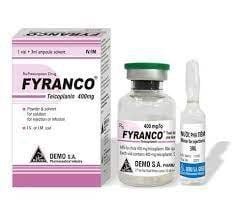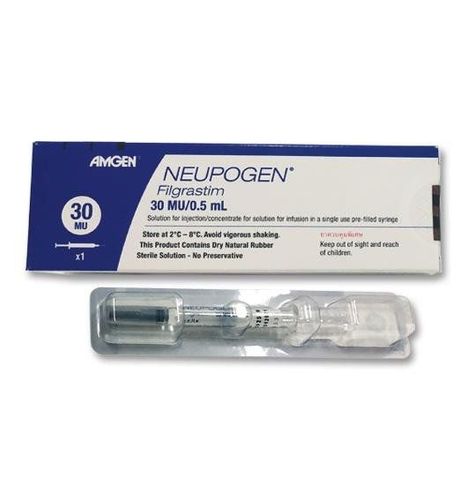This is an automatically translated article.
Teicoplanin is an antibiotic of the glycopeptide group used to treat infections caused by susceptible microorganisms. The following is some information about the uses, dosage and precautions when using the drug.1. General information about the drug Teicoplanin
Teicoplanin drug belongs to the group of Glycopeptide antibiotics, which is prepared in the form of injections with the content of 200 mg or 400 mg of freeze-dried Teicoplanin and does not contain preservatives. Each vial of Teicoplanin will come with one ampoule of solvent (distilled water for injection).
Effects of Teicoplanin:
Aerobic and anaerobic gram-positive infections will be treated with Teicoplanin. It is a mixture of 5 structurally similar components produced by Actinoplanes teichomyceticus. With the exception of enterococci, Teicoplanin has the ability to inhibit cell envelope synthesis and is active against gram-positive bacteria. Teicoplanin is known to be a potent bactericidal agent against susceptible strains. Teicoplanin is active against methicillin-susceptible and resistant staphylococci with a minimum inhibitory concentration (MIC) < 4 mcg/ml. Combined with Listeria monocytogenes, Corynebacterium spp., Clostridium spp. and gram-positive anaerobic cocci are between 0.25 and 2 mcg/mL. Specific studies on the mechanism of resistance to Teicoplanin in Streptococcus strains have not been studied, but resistance may have occurred in susceptible strains during previous treatment. When enterococci are resistant to vancomycin type A, they will also be resistant to Teicoplanin. These two drugs have a similar resistance mechanism, which is to modify the target of action on the cell envelope so that the glycopeptides cannot bind. Cases that may be indicated to use Teicoplanin :
Osteomyelitis ; Endocarditis due to methicillin-sensitive and resistant Staphylococcus aureus; Have an infection with Streptococcus or enterococci (Enterococcus); Peritonitis is associated with peritoneal dialysis and severe infections caused by S. aureus; May be used for prophylaxis of endocarditis and orthopedic surgery with a risk of infection with gram-positive bacteria; Suspect infection in patients with neutropenia or immunosuppression. Contraindications to the use of Teicoplanin:
Teicoplanin is not indicated for use in people with hypersensitivity to the components of the drug. Dosage and use:
Teicoplanin is used by injection or by slow intravenous infusion over 30 minutes or intramuscularly. The usual dose is Teicoplanin 400mg or 6mg/kg body weight intravenously on the first day, the following days 200mg or 3mg/kg, intravenously or intramuscularly. For children over 2 months old: Intravenous infusion with the first 3 doses, the dose is 10mg/kg/day. In the following days, the dose is 6mg/kg/day. For neonates: Intravenous infusion over 30 minutes, the first dose is 16mg/kg, followed by 8mg/kg, once a day. For the prophylaxis of orthopedic surgery, 400 mg intravenously at the time of induction of anesthesia. For patients with renal impairment, the dose should be adjusted and under the guidance of the treating physician. Treatment of overdose:
If Teicoplanin is used in overdose, dialysis cannot be removed. In cases of overdose, there were no symptoms or abnormalities in laboratory tests, even though Teicoplanin plasma concentrations were up to 300 mg/L.
2. Notes when using Teicoplanin drug
Side effects:
Common side effects are fever, skin rash, pain at the injection site, the rash is more common with high doses of Teicoplanin. Hypersensitivity reactions including leukopenia, eosinophilia, thrombocytopenic purpura, thrombophlebitis, bronchospasm, skin urticaria, increased transaminases and alkaline phosphates, and increased creatinine have been reported. serous. These side effects are uncommon. Rare side effects when taking the drug are deafness, anaphylaxis, neutropenia, Lyell's syndrome, and desquamation. Caution:
Cross hypersensitivity may occur in patients with hypersensitivity to vancomycin. Thrombocytopenia may occur with Teicoplanin, more commonly with high doses. In the process of using Teicoplanin to treat diseases, it is recommended to periodically check hematology, liver, and kidneys. For pregnant women, use the drug only when absolutely necessary and prescribed by the doctor. Because of the ototoxic nature of teicoplanin, neonates should be evaluated for hearing function. Stop breastfeeding if using this medicine. Use caution when driving or operating machinery that requires high concentration. Drug interactions:
Teicoplanin when combined with antibiotics of the Aminoglycoside group will not increase toxicity to hearing or kidney function. Therefore, Teicoplanin in combination with Gentamicin is used in the prevention of endocarditis. Above are the uses of Teicoplanin, dosage and note when using. To ensure the safety of your health and maximize the effectiveness of treatment, you need to take the medicine exactly as directed by your doctor.
Please dial HOTLINE for more information or register for an appointment HERE. Download MyVinmec app to make appointments faster and to manage your bookings easily.




